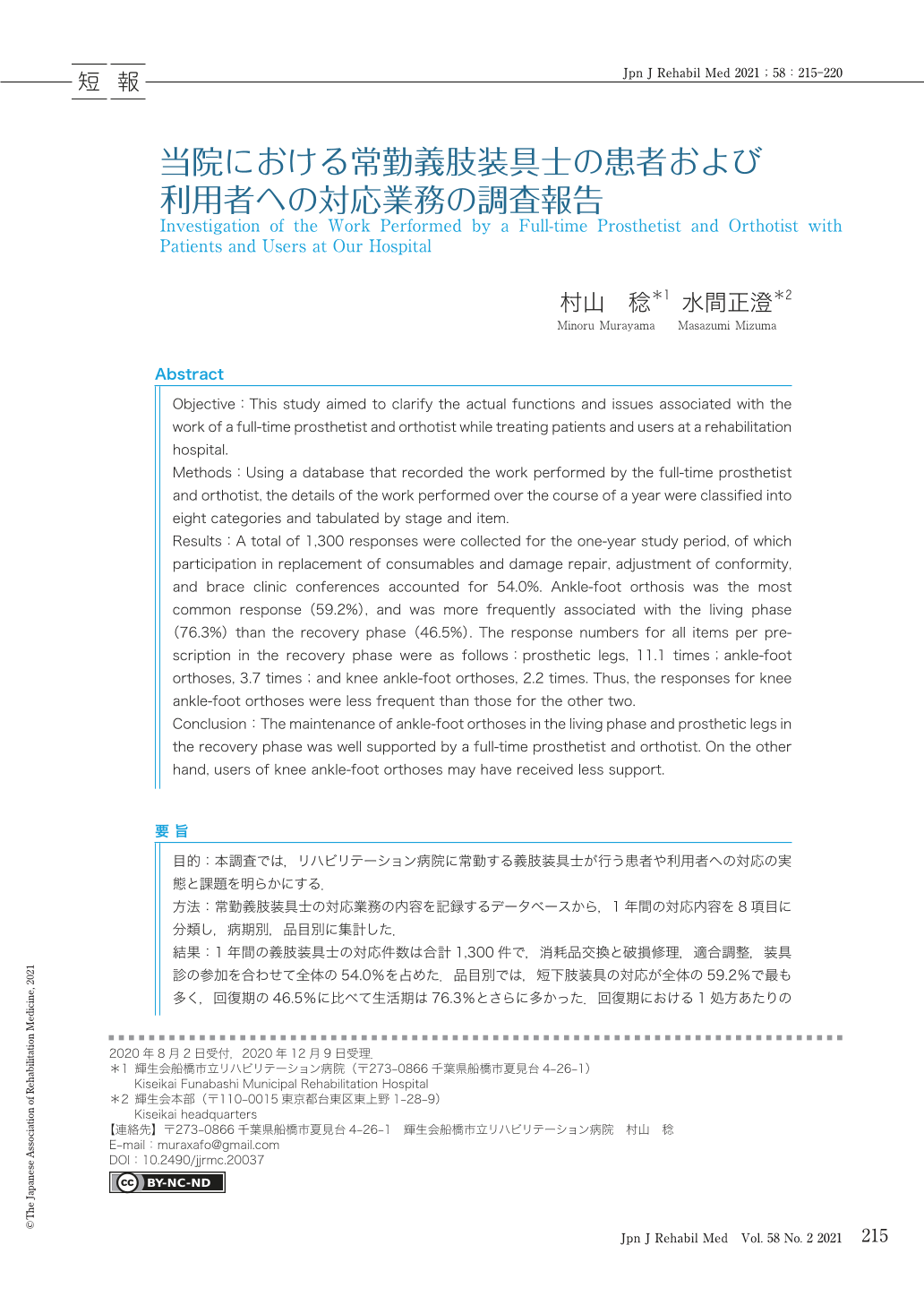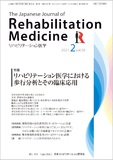Japanese
English
- 販売していません
- Abstract 文献概要
- 1ページ目 Look Inside
- 参考文献 Reference
要旨
目的:本調査では,リハビリテーション病院に常勤する義肢装具士が行う患者や利用者への対応の実態と課題を明らかにする.
方法:常勤義肢装具士の対応業務の内容を記録するデータベースから,1年間の対応内容を8項目に分類し,病期別,品目別に集計した.
結果:1年間の義肢装具士の対応件数は合計1,300件で,消耗品交換と破損修理,適合調整,装具診の参加を合わせて全体の54.0%を占めた.品目別では,短下肢装具の対応が全体の59.2%で最も多く,回復期の46.5%に比べて生活期は76.3%とさらに多かった.回復期における1処方あたりの全項目の対応した回数は,義足が11.1回と多く,AFOが3.7回,KAFOが2.2回と少なかった.
結論:義肢装具士の常勤により,生活期における短下肢装具のメンテナンスと回復期における義足のフォロー体制が充実している一方で,長下肢装具の使用者への対応不足が生じている可能性がある.
Objective:This study aimed to clarify the actual functions and issues associated with the work of a full-time prosthetist and orthotist while treating patients and users at a rehabilitation hospital.
Methods:Using a database that recorded the work performed by the full-time prosthetist and orthotist, the details of the work performed over the course of a year were classified into eight categories and tabulated by stage and item.
Results:A total of 1,300 responses were collected for the one-year study period, of which participation in replacement of consumables and damage repair, adjustment of conformity, and brace clinic conferences accounted for 54.0%. Ankle-foot orthosis was the most common response (59.2%), and was more frequently associated with the living phase (76.3%) than the recovery phase (46.5%). The response numbers for all items per prescription in the recovery phase were as follows:prosthetic legs, 11.1 times;ankle-foot orthoses, 3.7 times;and knee ankle-foot orthoses, 2.2 times. Thus, the responses for knee ankle-foot orthoses were less frequent than those for the other two.
Conclusion:The maintenance of ankle-foot orthoses in the living phase and prosthetic legs in the recovery phase was well supported by a full-time prosthetist and orthotist. On the other hand, users of knee ankle-foot orthoses may have received less support.

Copyright © 2021, The Japanese Association of Rehabilitation Medicine. All rights reserved.


